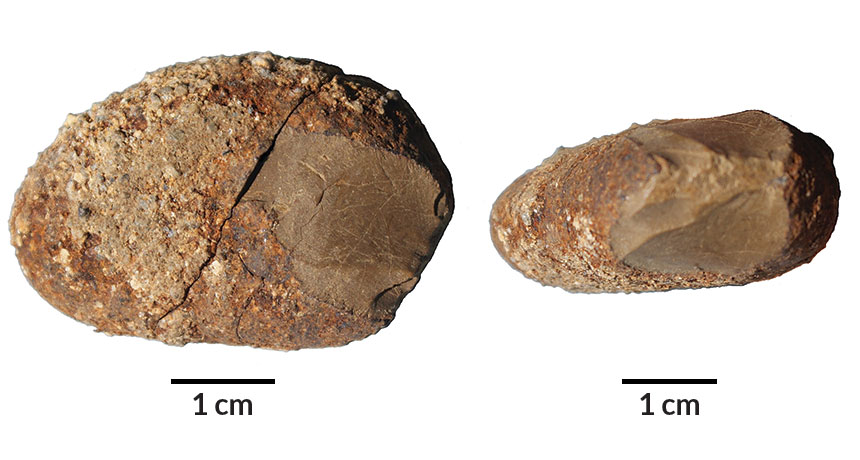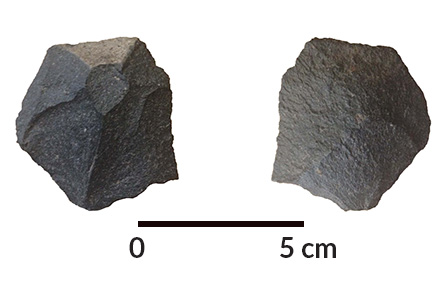People roamed tip of South America 18,500 years ago
Stone tools and charred animal bones from Monte Verde help to rewrite human history in the New World

AMERICAN MADE A 18,500- to 17,000-year-old stone artifact unearthed at Chile’s Monte Verde site, shown from the side (left) and top (right), contains smooth areas where pieces of the rock were struck off to create a scraping or cutting tool. Researchers say humans first visited the site at least 18,500 years ago.
T. Dillehay








